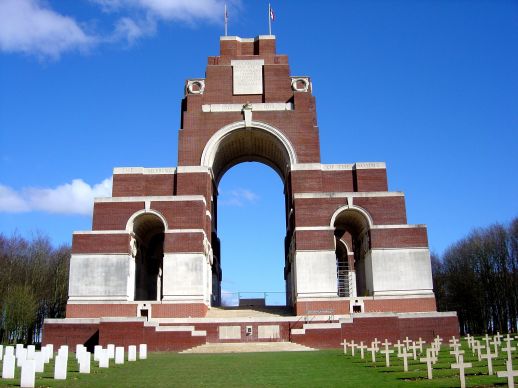John Lapidge
Date of birth: 1886
Date of death: 1.7.1916
Area: Brotherton
Regiment: York & Lancaster
Rank: Private
Service number: 13/575
War Service
John Lapidge enlisted in the 13th Service Battalion (1st Barnsley) of the York & Lancaster Regiment on the 6th October 1914. Often known by its original name of the Barnsley Pals this battalion was formed in Barnsley on 17 September 1914 by the Mayor and Town. Moved to Silkstone in December 1914. Then in May 1915 they moved to Penkridge Camp (Cannock Chase) and attached to 94th Brigade in 31st Division. Went to Ripon in July 1915 and on to Salisbury Plain in October. In December 1915 they sailed for Egypt then went on to France in March 1916.
These dates tally with those shown on John’s Military History sheet (see later).
It could not be said that John was a perfect soldier as he faced disciplinary action on a number of occasions for being absent without leave. These were not serious offences and usually involved a single day e.g. Missing from 10 a.m. to 10 p.m. These absences may have been due to him making unauthorised home visits or maybe he just found a convenient ‘watering hole’. The punishments meted out involved confinement to base and loss of days pay.
In late November 1915 the Division received a warning order to prepare to sail for France. Advance parties began to depart but on 2nd December final orders were received that the Division would go to Egypt accompanied by the artillery of 32nd Division. Its own artillery would join 32nd Division in France. The advanced parties were recalled and the Division sailed from 7 December, with Divisional HQ being established at Port Said on Christmas Eve. The last units arrived in Egypt on 23rd January 1916.
1916
The Division took over the No 3 Sector of the Suez Canal defences and Divisional HQ moved to Kantara on 23rd January. The stay in Egypt was short, and between 1st and 6th March the Division sailed to Marseilles of rservice on the Western Front.
The 31st Division subsequently remained in France and Flanders and took part in these actions:
The Battle of Albert
The battle of Albert, 1-13 July 1916, is the official name for the British efforts during the first two weeks fighting of the first battle of the Somme. As such it includes the first day of the Somme, the most costly day in British military history and one that has coloured our image of the First World War ever since.
The battle of the Somme had been intended to be a big Anglo-French assault on the centre of the German lines. The original plan had been somewhat disrupted by the German attack at Verdun on 21 February, which pulled in an ever increasing number of French troops. By the time the battle began, it had turned into a largely British affair, with support from the French Sixth Army on the Somme itself.
The artillery bombardment began seven days before the infantry were due to go in. It was not as effective as had been hoped, leaving large portions of the German front line intact. The German lines on the Somme contained a large number of deep concrete bunkers, which protected the Germans from the British bombardment, allowing them to emerge once the bombardment ended. Worse, along most of the British front the bombardment failed to destroy the German wire.
The attack on 1 July was made by eleven divisions along a fourteen mile front from Montauban to Serre. Haig hoped to capture the German front line along this entire front, then break through their second and third lines, before turning left and rolling up the German lines to the sea. This would prove to be the most ridiculously optimistic plan. Along the northern two thirds of the front virtually no ground was taken. A few lodgements were made in the German front lines, but they were impossible to extend and difficult to support. The British suffered 57,000 casualties on 1 July, the most costly single day in British military history. Thirteen divisions at full strength contained 130,000 men, so the British suffered over 40% casualties in a single day.
John Lapidge was missing in action on 1st July 1916 and has no known grave. His name is commemorated on the Thiepval Memorial (along with several other Brotherton men) situated between Albert and Bapaume in France.
John Lappage (as it is spelt) is also remembered on the war memorial in Royston near Barnsley.
Family Life
There seems to be no record of any Lapidge (or similar spelt) name in Brotherton.
The only indication of any link with the village is through John’s army record which fortunately still survives. This shows that he was born in Brotherton but further detail from these records indicate that he did not know his family and was brought up in Pontefract Workhouse (see extracts later).
In the 1891 census there is a Leah Lapidge aged 8 years old who was adopted by a family in Ferrybridge so this may be corroborative.
The only other ‘life details’ that can definitely be confirmed also come from his army records and relate to his marriage to a Mary Ann nee Rodgers in late 1907 at All Saints Church, Aston which is east of Sheffield. (In the Marriages register his name is spelt Lappage). They had two children - Joseph born 11th April 1909 in Aston and Emily born on 2nd June 1910 in Royston near Barnsley. When he enlisted his address was 3 Milgate Street, Royston.
 Thiepval Memorial
Thiepval Memorial

